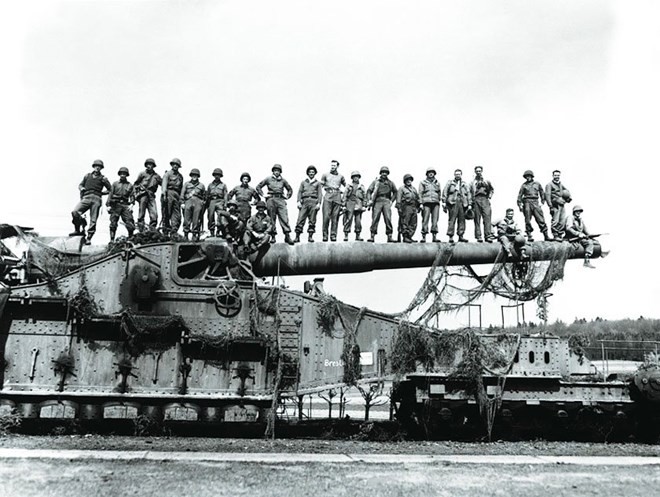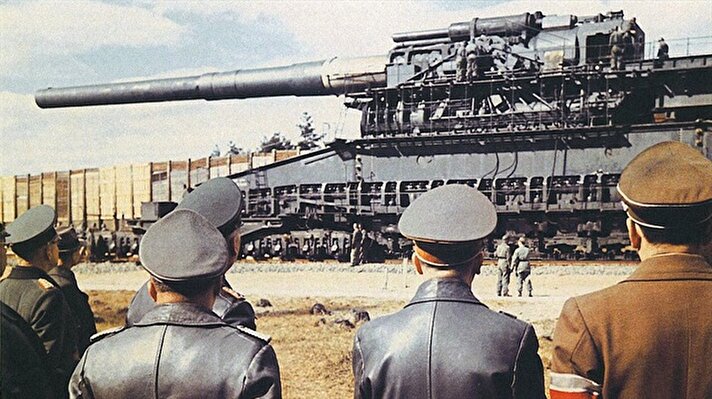When it comes to war, bigger doesn’t always mean the best nor even the most powerful. Nonetheless, back in 1942, the biggest weapon was also the most devastating one known to man until the U.S. dropped the atomic bomb in Hiroshima.

Adolf Hitler (second from right) and Albert Speer (right) in front of the 800mm gustav railway gun in the year 1943. (Fotograf Walter Frentz/Wikimedia Commons)

When the European nations were victims of the German army’s devastating invasion, fortifications were made to sustain everything the Germans could bring in strategical cities. Not to be stopped nor undone, Adolph Hitler himself inquired and commissioned the creation of a 1,350 ton, 800-mm caliber monster cannon that could fire a 7-ton shell to a range of 30 miles.
Krupp AG was the German manufacturer who made this powerful weapon. Hitler actually visited the Krupp manufacturing plant to inquire about the viability of such a theoretical weapon, to set things into motion to attain such a cannon.

(Ultimate Military Channel/YouTube)
The Schwerer Gustav, or in English, the Heavy or Great Gustav, was explicitly designed in the late 1930s, as a siege artillery weapon to penetrate and annihilate the unbelievably thick reinforced concrete fortifications of the French defensive facility known as the Maginot Line. It was used only once during the war against Soviet fortifications that withstood everything Germany threw at them, and the results were beyond devastating.
The Schwerer Gustav was 155 feet in length and 250 people were needed over a three-day period to assemble the giant weapon. It was never actually used in the fighting between the French and German armies since Germany invaded France through Belgium and almost entirely evaded the expensive line of French defenses.
However, in June 1942, the Schwerer Gustav was called in and first used in combat at the Eastern Front of Sevastopol. Despite a massive aerial and artillery assault from the Germans, the Soviets nestled in their massive underground bunkers. They were at a deadlock. The German’s high command hoped that bringing in the Schwerer Gustav would end that.

(Ultimate Military Channel/YouTube)
They transported it to Crimea and meticulously situated and secured the Gustav. It took some 3,800 workers to do so. When the world’s largest gun was finally released, it proved to be completely devastating.
Over a four-week period that started on June 5, 1942, Gustav operated with overwhelming force, later obliterating a crucial Soviet underground ammunition supply. By early July, the Gustav brought an end to the siege with the Soviets surrendering and Sevastopol was left in ruins.
Gustav’s effectiveness as the ultimate siege breaking artillery piece was undeniable, although that was the only time it was used. It is suspected that the Germans destroyed the weapon so that it could never fall into enemy hands, primarily those of the Soviet Union.
Source: militarytimes.com








